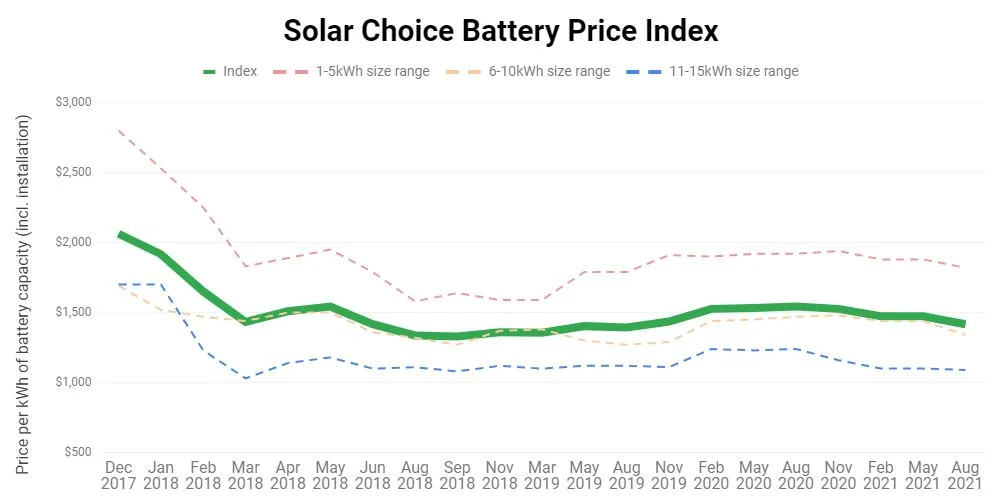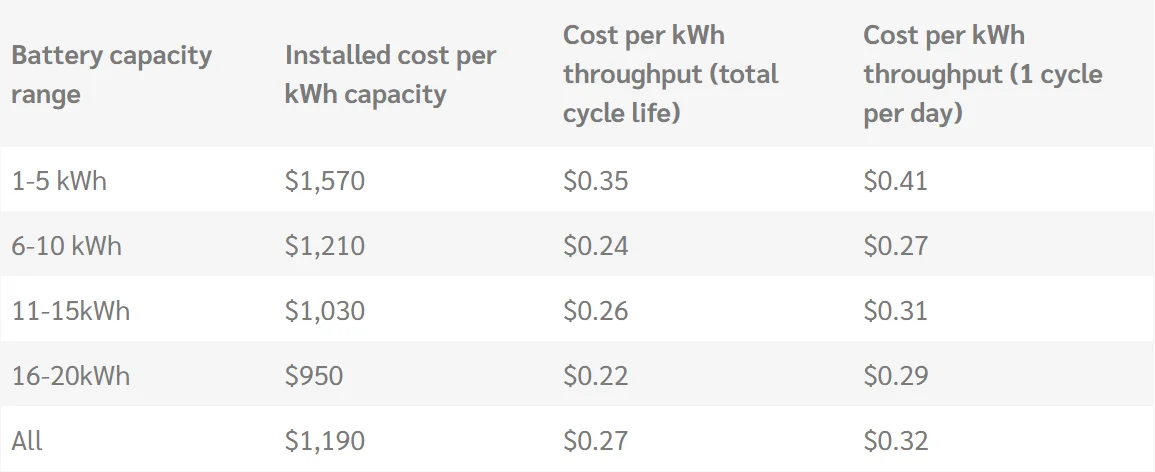- How Big Should Your Solar Battery and System Be?
- How solar battery storage works
- Introduction to solar battery storage
- Tesla Powerwall battery solutions
- What Do Solar Batteries Look Like – and Where Can I Install Them?
- What Size Solar System Should You Have When Adding a Battery
- What’s the Real ROI on Solar and Battery Systems in 2025?
- When are batteries worth it? Solar energy battery viability.
- Which Solar Battery Is Right for Your Home?
- Does Solar Increase Property Value in Shoalhaven? The Numbers Speak for Themselves
- Empowering Small Businesses with Solar: The Australian Small Business Energy Incentive
- How much will you save with solar?
- How the 2025 Australian Cheaper Home Batteries Program Works
- Solar finance options
- The 2024 NSW Government Home Solar Battery Rebate Scheme
- What government incentives and financing options are available for solar?

When are batteries worth it? Solar energy battery viability.
Are solar batteries worth it?” It’s a great question. If you’ve been pondering this, you’re not alone. We anticipate this question with every client we serve.
Today, one thing is clear:
“The holy grail… is being able to store solar energy for use when the sun isn’t out.” – Julie Franz.
You need proper planning to harness the power of stored energy.
First, identify the main reason for buying solar batteries. If it’s merely to reduce costs immediately, then maybe it’s not yet time. Research by AEMO reveals that it takes a payback period of 6 to 12 years for a standard solar PV battery system of 5 to 8 kWh.
It’s also true that solar batteries are relatively expensive. Today, a hybrid inverter with a corresponding lithium-ion battery costs between $8,000 and $15,000. Mostly, the payback period may exceed the standard 10-year warranty.
But there’s good news: battery prices are dropping. A battery price index published by SolarChoice supports this:
 Battery Price Index shows solar battery prices over the past 3 years. With time, batteries may give an ROI that matches the payback period. Source: solarchoice.net.au
Battery Price Index shows solar battery prices over the past 3 years. With time, batteries may give an ROI that matches the payback period. Source: solarchoice.net.au
Clearly, there’s more to batteries than an economic angle. Today, you’ll find the long answers, bundled into the following questions:
Do I need a solar battery for my panels?
How much are solar batteries?
How can the Tesla Powerwall help boost my current solar plan?
Solar terminology and keywords
Before we start, you should become familiar with some terminology that we use when explaining home solar.
Kilowatt (kW)
A unit that measures the rate of energy transfer. 1 kW = 1000 watts. For solar panels, a kW rating states the highest amount of power the solar panel can deliver at a given point in time. For batteries, it’s the maximum amount of power the battery can deliver.
Kilowatt-hour (kWh)
A unit of energy consumed/produced over time. 1kWh = 1000 Wh. For example, a solar panel that outputs 700W in an hour is said to deliver 700Wh or 0.7kWh of energy. For batteries, it’s the amount of energy the battery can store.
Round-trip efficiency
A lithium-ion battery’s round trip efficiency defines the amount of energy a battery stores after it achieves full battery capacity. It ranges between 80 and 95%.
DC coupling
A technique that allows the flow of direct current (DC) directly from a solar panel to the battery without inversion. Should you need AC power, the electricity will only be inverted once as it flows from your battery to your devices or to a grid.
Myths about solar battery storage
The following are misconceptions about solar batteries.
You can earn money from a feed-in tariff for excess solar power produced by your solar panels during the day
A while back, you could earn a premium for excess power generated by your solar system. This was sent to a virtual power plant, backed by a friendly feed-in tariff. Today, those feed-in tariff schemes have either been greatly reduced or scrapped.
For instance, Victorian households now get a lower price for their exported power (about 6.2 cents/kWh) and pay up to 33 cents/kWh for grid energy usage at peak times. Here in the Shoalhaven, it’s typically not much better, at 7-12 cents/kWh paid for home solar fed into the grid.
Adding battery storage to solar panels isn’t worth the investment
The rising cost of energy has led to the demand for more solar storage systems. There are times when your solar output matches your daily needs. In such a case, you could go without a battery as you may find it only just pays for itself by the time it needs replacement.
The difference comes when your power needs peak in the evenings when you’re paying for it from your electricity retailer. Charging an electric car or using other energy-intensive appliances at times when you’re not generating your own power will mean your bills aren’t significantly reduced without using a solar battery.
You can store all the extra energy generated by the panels on the battery during the day. That way, you’re assured of backup in case of a blackout or power outage.
You should strive to get the perfect solar and battery storage solution to meet your lifestyle and power consumption needs.
Are solar batteries worth it?
Solar batteries are absolutely worth it if your energy usage tends to be at night, or if you live in areas where power outages are common, or on-grid power is not a viable option. Otherwise, if you use most of your power during the day, it’s currently hard to justify the expense of a battery when looking at it purely economically – you may only have just paid for it with energy bill savings by the end of the battery’s life.
But of course, enough batteries will help save the planet from global warming by reducing household carbon emissions, which is nothing to be sniffed at.
Before opting for a solar battery, you need to consider several factors:
Available rebates and incentives
Feed-in tariffs have been largely phased out and replaced by reflective tariffs. This move, coupled with rising electricity costs, has led to the mass adoption of battery storage.
The federal and state governments have also come to the party. Many state governments have their own commitments toward net-zero carbon emissions by 2050 or sooner. The NSW government is piloting a scheme “Empowering Homes solar battery loan” which provides interest-free loans for installing a solar battery. This isn’t available for residents in the Shoalhaven at the moment, but as it moves out of the pilot phase, more areas are expected to be eligible.
With more emphasis on reducing carbon emissions, the solar incentives available locally are likely to go beyond the federal government STC rebate scheme and NSW Government solar incentives and programmes in the future.
Take a look at forward-looking South Australia, where the Adelaide City Council offers a rebate of $5,000 for homes that opt for batteries. This is part of the Sustainable City Incentives Scheme, which provides:
Battery energy storage: $5,000
Solar panel: $5,000
Charging controllers for electric vehicles: $500
Energy efficiency upgrades: $5,000
LED light replacement: $1,000
Effects of battery storage on electricity costs
Batteries can potentially allow homeowners to use more electricity. For instance, adding a 4kWh battery to a 5kW solar panel can boost generated electricity by 30 to 60%.
And as grid electricity becomes more expensive, battery storage prices are falling. You could go off-grid in the years ahead.
Increased adoption and plummeting battery costs
Between 2007 and 2014, battery costs dropped by 14%. The trend will continue owing to the large-scale production by solar companies.
Consequently, over 50% of Australian households could adopt a $10,000 battery system whose payback period matches the typical 10-year warranty. These homes will optimize their generated solar power and minimize their dependence on the grid.
Solar battery storage price
Solar battery prices in Australia range between $4,500 and $18,000. Prices depend on your purpose, residence, and whether you need a backup when the grid is down.
Other factors include battery chemistry, size and whether you want to purchase a standalone battery or have the battery as part of an integrated solar system.
The table below gives the average solar battery price in Australia as of August 2021.
Average Battery Size (kWh) | Average Battery Price (AUD)* | Average Battery Price, including Charger/Inverter (AUD) |
3 | $4,710 | $5,340 |
6 | $6,800 | $7,700 |
8 | $9,680 | $10,800 |
10 | $10,550 | $11,620 |
13 | $13,390 | $13,910 |
18 | $17,100 | $18,000 |
It’s best to consider installation costs. The table below shows approximate installation prices (as of August 2021).
 A full installation for a larger battery like the Tesla Powerwall 2 goes for $14,500.
A full installation for a larger battery like the Tesla Powerwall 2 goes for $14,500.
The Tesla Powerwall 2: a revolutionary solution
The Powerwall 2 is a revolutionary, second-generation residential battery system produced by the Tesla company.
The Tesla Powerwall 2 has the following interesting characteristics:
It produces twice the capacity of the former Powerwall. The equivalent storage capacity stands at 13.5 kWh.
It produces a comparatively greater power output compared to its predecessor. This means 5kW of continuous output, and 7kW at peak.
The battery’s round-trip efficiency stands at 90%.
One property may hold up to ten batteries collectively installed alongside solar panels. It works best for intensive energy needs.
Currently, the Powerwall 2 is eligible for state incentives, including a 26% federal solar tax credit.
Talk to a Solar Sales specialist to confirm the duration of this offer and the conditions in your state and region.
How does the Tesla Powerwall work?
3 things inform the Tesla Powerwall 2’s round of operation:
From sunrise through the morning, the solar panels power your home.
When the solar energy exceeds the maximum amount your panels can hold, the excess energy charges your Powerwall.
During the night, when the sun has set, the Powerwall runs your home.
You can see the Powerwall in action in the video below:
Could it be the right time to get a solar battery?
It depends.
Since 2010, the solar industry has witnessed an 80% decrease in the cost of batteries. This may plummet by a further 50% by 2025. It is estimated that in less than 10 years, battery storage capacity will increase 50 times.
Owning a home battery system could easily allow you to store grid power during off-peak periods, and then tap into battery power during peak times, thus reducing electricity costs. This makes perfect sense particularly if you’re not using a lot of energy when the sun is shining.
Additionally, many people like to know that if there is a power outage that their battery will mean they have an uninterrupted supply (obviously, the length of time this lasts depends on usage and weather).
Or better yet, you could get completely off-grid at the right time.
At Shoalhaven Solar, we have the right answers to your queries about solar energy batteries.
We are willing to help you discover how much you can save by adopting a solar energy battery to supplement your solar panels. Better yet, we could help you adopt a battery-ready system.
Contact our support team today for more insight on this.
Suggested Articles
- How Big Should Your Solar Battery and System Be?
- How solar battery storage works
- Introduction to solar battery storage
- Tesla Powerwall battery solutions
- What Do Solar Batteries Look Like – and Where Can I Install Them?
- What Size Solar System Should You Have When Adding a Battery
- What’s the Real ROI on Solar and Battery Systems in 2025?
- Which Solar Battery Is Right for Your Home?